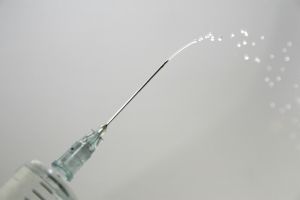Medical Fusion Conference Lecture Videos Available
Freelance MD has become a great place for physicians to learn more about ways they can leverage their medical training in order to advance their careers. This web hub is a great distance-learning tool to connect like-minded physicians and promote learning.
The live/physical version of Freelance MD is our Medical Fusion Conference which occurs every November in Las Vegas. At the Medical Fusion Conference we bring together experts from a variety of niche areas-- many of whom write for Freelance MD-- in order to network and connect person to person. It's an event that only happens once a year, so we eagerly promote it here on Freelance MD with the hope that our readers will pencil the event into their busy schedules. We want to meet our Freelance MD members and we know you'll benefit from the speakers we've assembled.
Over the past few weeks we've reorganized our Medical Fusion Conference website to make it more interactive and give potential participants an idea of what happens at this innovative event. We recently added a blog to the Medical Fusion Conference website and we've posted a few lecture clips from past Medical Fusion Conferences.
Check out the videos below to get an idea as to what goes on at the Medical Fusion Conference. We'll be posting more lecture clips in the near future, so stay tuned to Freelance MD.
Video clip #1: In this video, we assembled a team of venture capitalists to discuss VC and how clinical physicians can become a part of this interesting career. Dr. Bruce Robertson, Managing Director of H.I.G. Bioventures, Dr. Josh Resnick of Prism Ventures, and Dr. Joe Smith, VP of Emerging Technology at Johnson & Johnson are the members of this interesting panel discussion.
Video Clip #2: Dr. Michael VanRooyen in the director of the Harvard Humanitarian Initiative and a well-known expert on humanitarian disasters. However, Dr. VanRooyen is also an experienced entrepreneur and has helped start and develop four businesses, one of which, Ibex, was eventually bought by Picis for millions. In this lecture, Dr. VanRooyen discusses the culture of start-up companies and how clinical physicians can develop their business skills in order to be more effective in enterprises like these.
Video Clip #3: Dr. Mike Woo-Ming, a Family Physician who retired from medicine at the age of 35 years old in order to focus on his internet businesses, discusses internet marketing and internet entrepreneurship. "Dr. Mike" as he is known in internet circles, offers advice to those who are interested in using the internet to leverage their clinical knowledge in a variety of ways.
 Email This Article tagged:
Email This Article tagged:  Dr. Bruce Robertson,
Dr. Bruce Robertson,  Dr. Joe Smith,
Dr. Joe Smith,  Dr. Josh Resnick,
Dr. Josh Resnick,  Dr. Michael VanRooyen,
Dr. Michael VanRooyen,  Dr. Mike Woo-Ming,
Dr. Mike Woo-Ming,  Nonclinical Career,
Nonclinical Career,  Venture Capital,
Venture Capital,  physician entrepreneur |
physician entrepreneur |  Jul 12, 11:23 AM
Jul 12, 11:23 AM 








